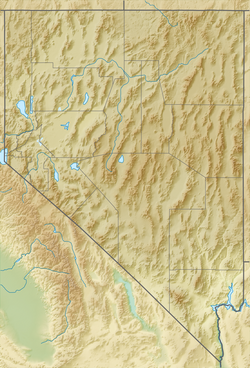| Fish Creek Range | |
|---|---|
| Highest point | |
| Elevation | 2,477 m (8,127 ft) |
| Geography | |
| Country | |
| State | |
| District | Eureka County |
| Range coordinates | 39°18′37.748″N116°5′22.212″W / 39.31048556°N 116.08950333°W |
| Topo map | USGS Bellevue Peak |
The Fish Creek Range is a mountain range in Eureka County, Nevada. [1]
The range was so named on account of nearby streams well-stocked with fish. [2]
